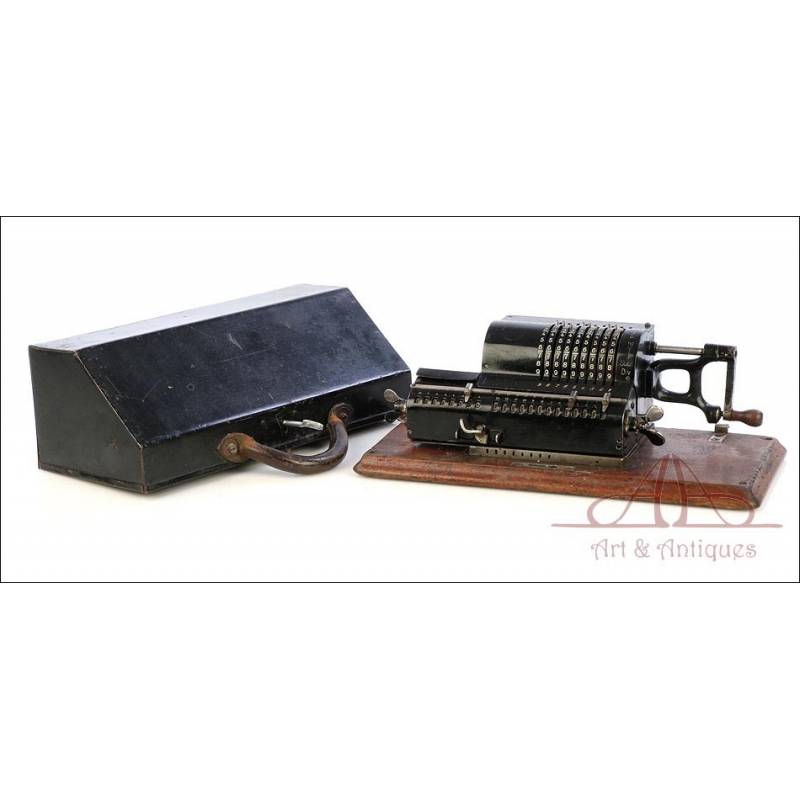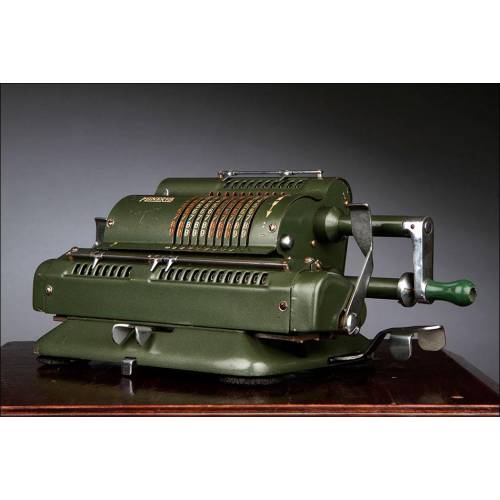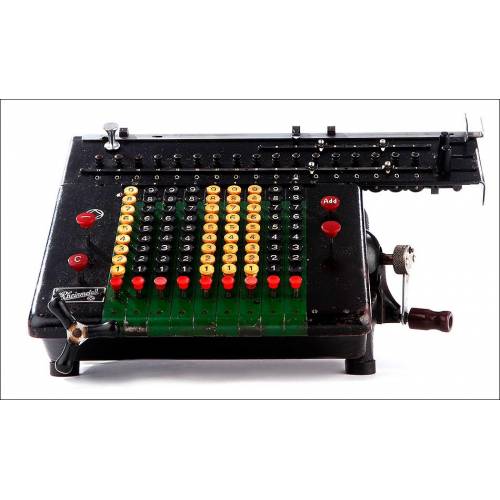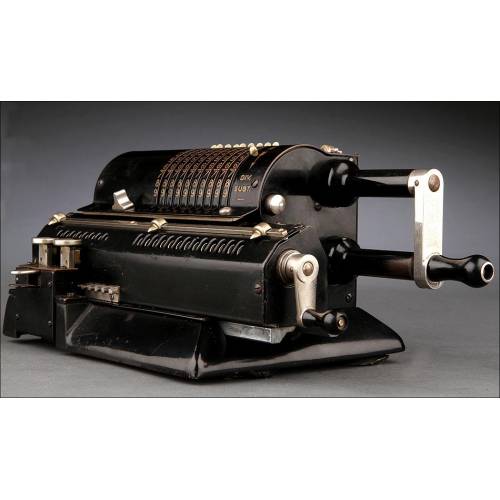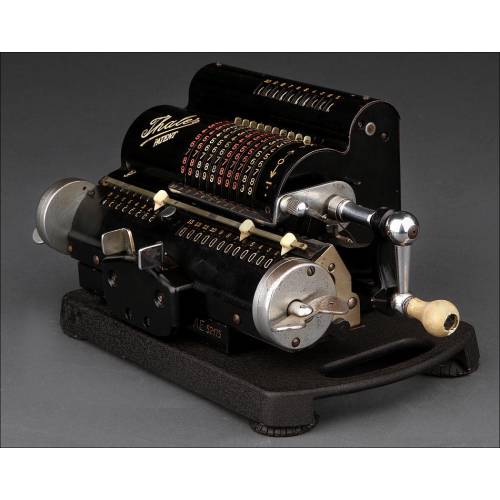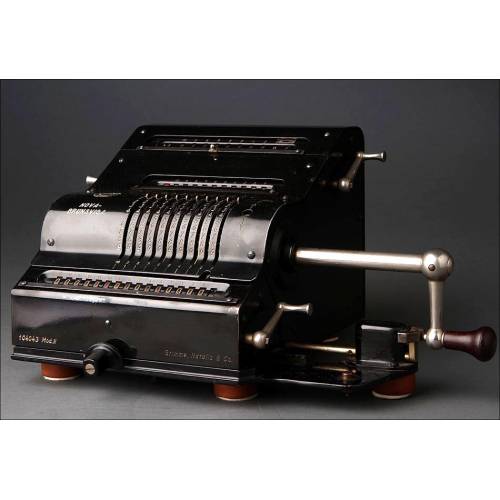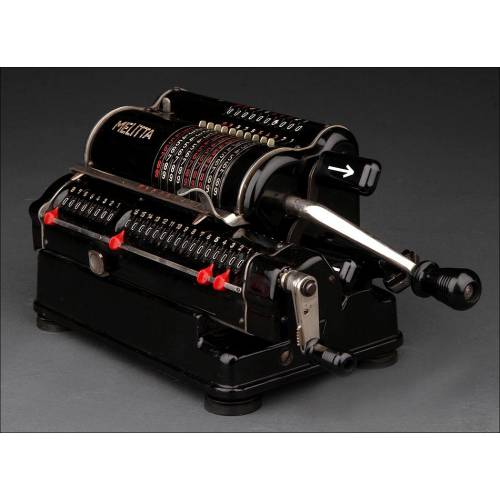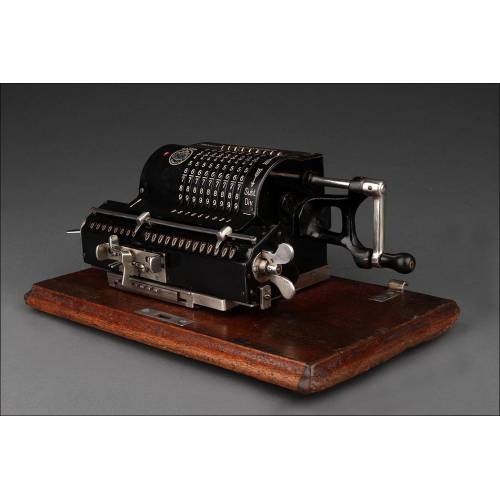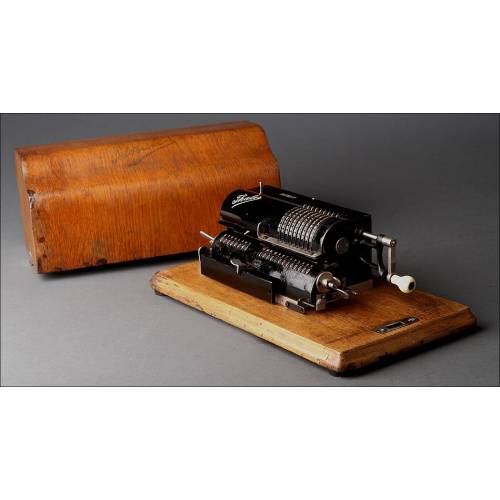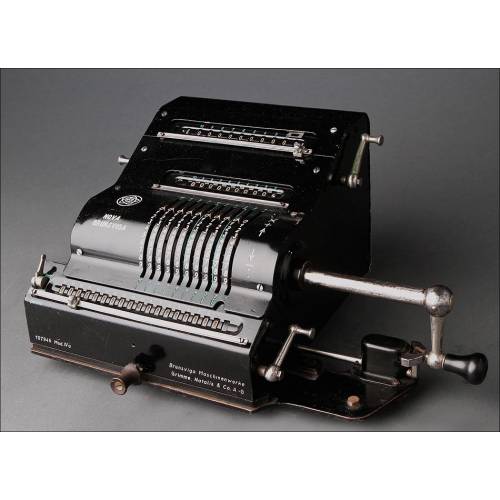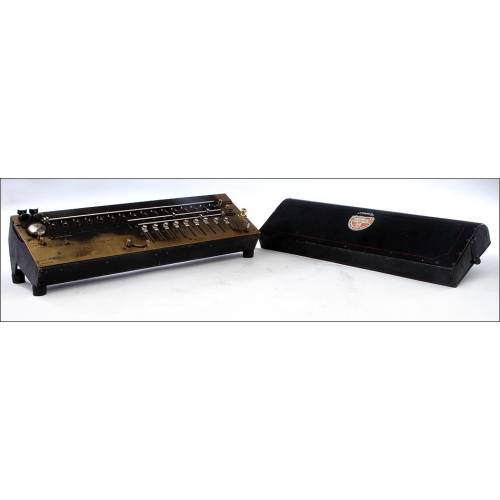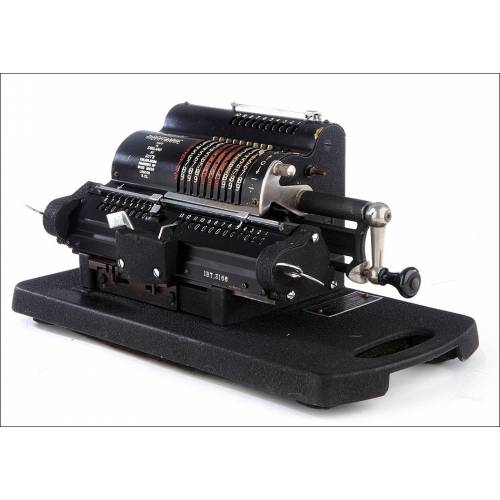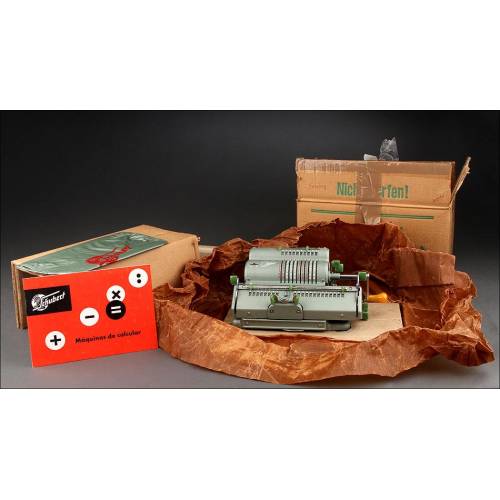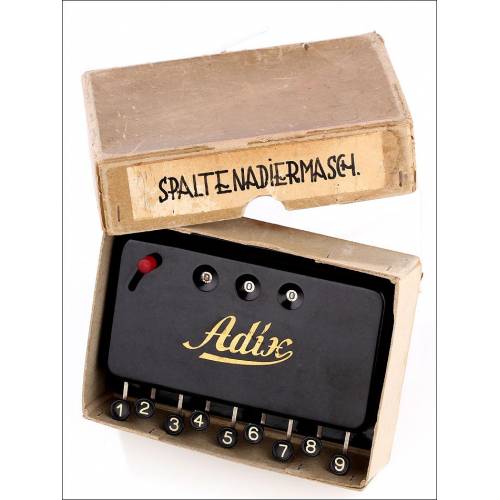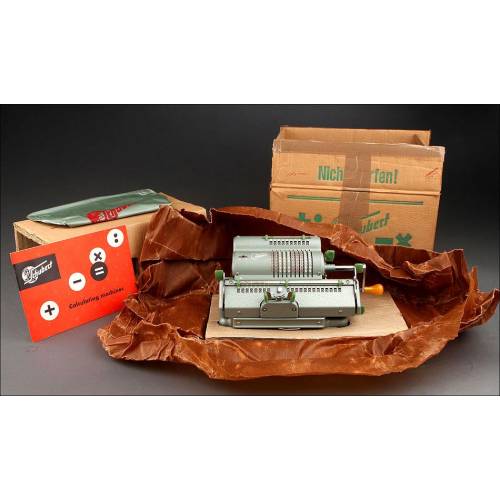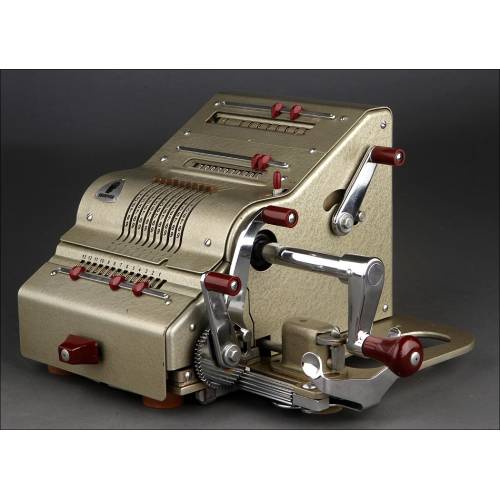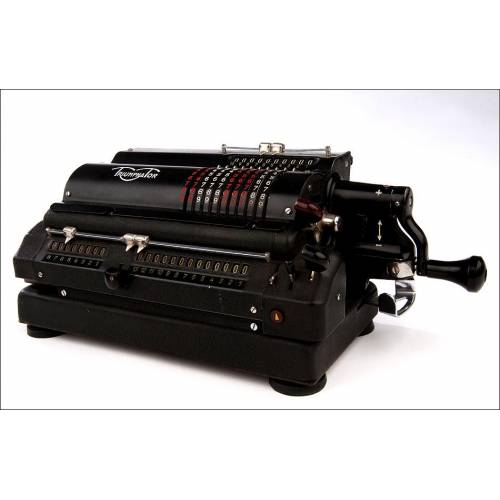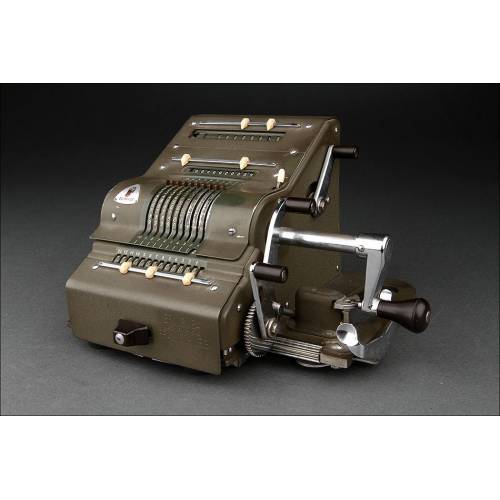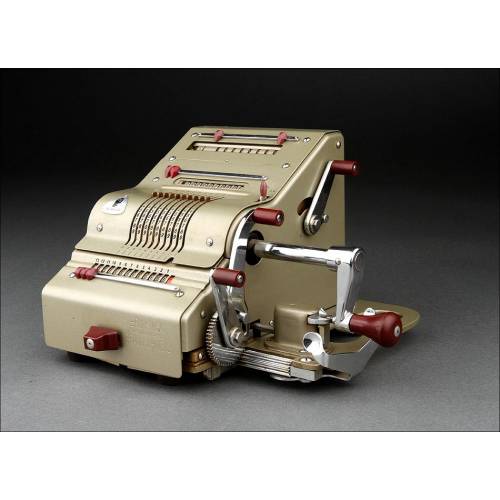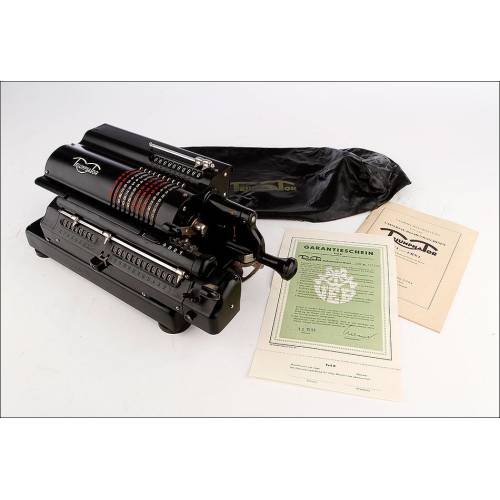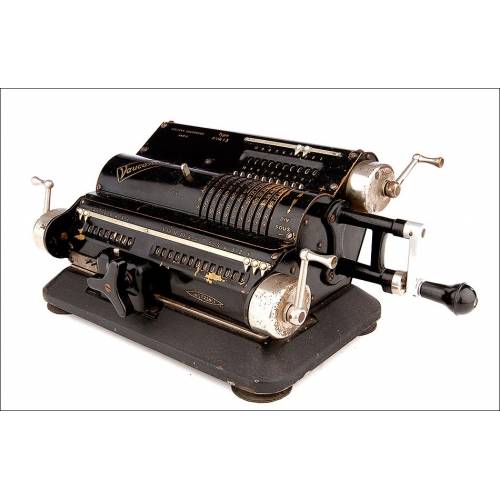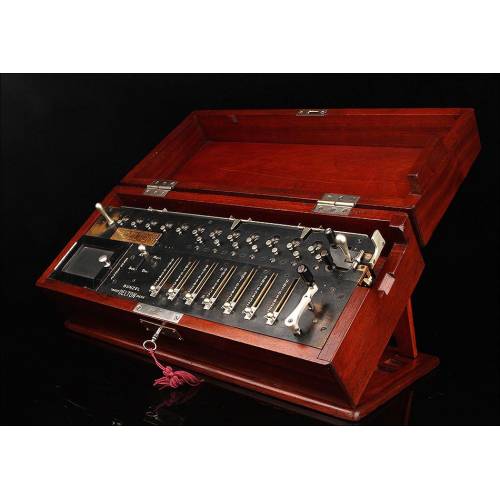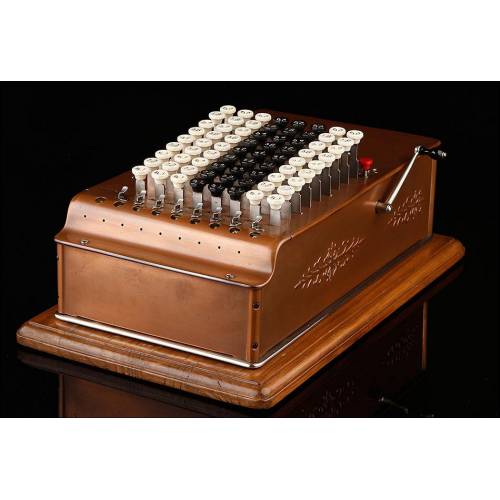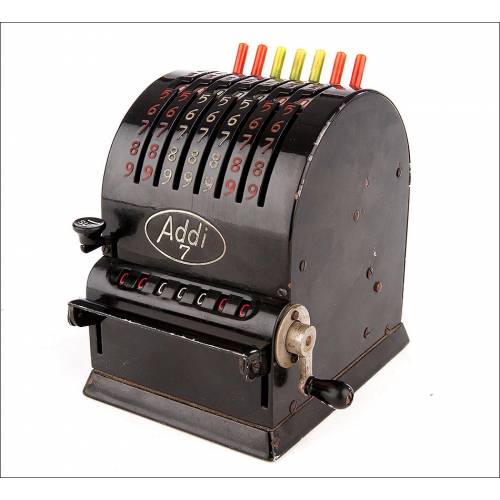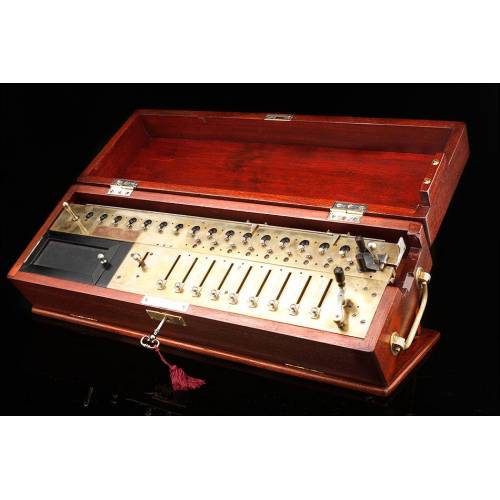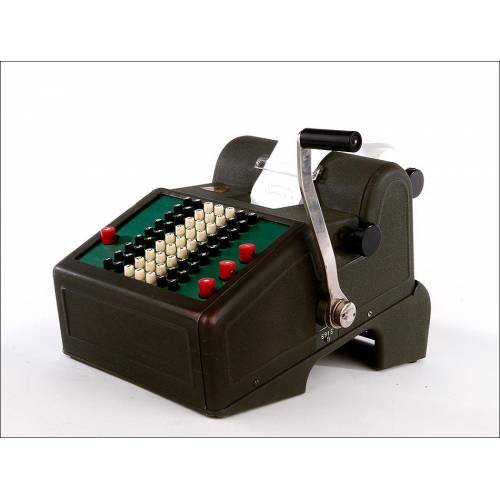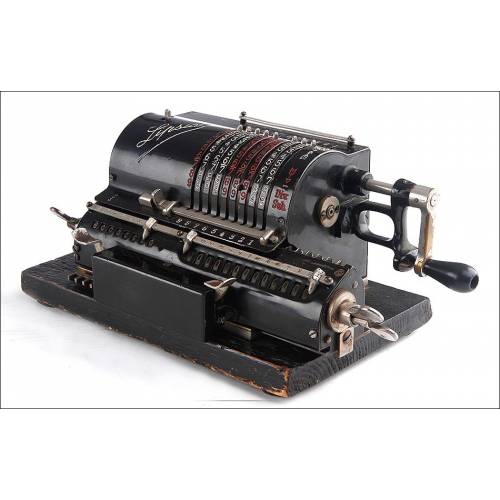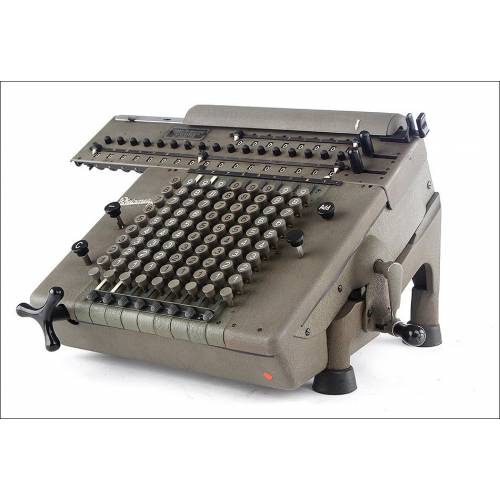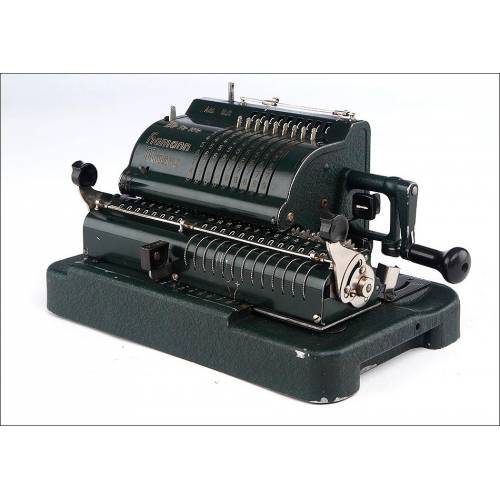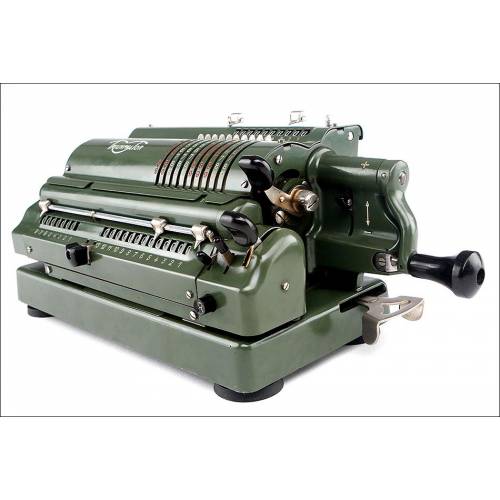C-989
Antique Brunsviga B Calculating Machine. Germany, 1905
Nostalgic Brunsviga B calculator with pinwheel mechanism. In perfect working order. Original metal cover and key.
Sold!
Antique Brunsviga model B calculating machine made in Germany between 1906 and 1906, in excellent working order and entirely original from the period. The calculator preserves its original solid-wooden base and is covered by a metal casing, also in fine condition. The lock which connects the cover and the base is operative but the cover does not close safely, so it is not advisable to carry the machine holding it by the handle as it could open. The calculator itself shows off a great working order, fluid and soft, which turns it use into a real pleasure for any owner. The metal case that protects the machines inner mechanism bears a shiny black enameled finish. The finish shows slight signs of wear, logical if we consider the calculators ancient age; though, these details do not interfere with its fine look and surely provide the machine with character. At the top of the calculator we can see the brand name Brunsviga in white lettering, slightly worn. To the left we can see the serial number Nº 2914, which is also engraved at the bottom. This antique Trinks Brunsviga calculating machine preserves all its ancient charm, as well as being capable of performing basic arithmetic operations with accurate results. Dimensions: Base: Width: 16 in / 40 cm. Depth: 7.8 in / 16.5 cm. Calculator: Bottom Width: 8.8 in / 22 cm. Top Width: 6.24 in / 16.5 cm. Height: 4.6 in / 11.5 cm. Total Width: 5.2 in / 16.5 cm.Brunsviga Calculators History The firm Grimme, Natalis & Co (GNC) was established in 1871 to build sewing machines and domestic appliances at Braunschweig, Germany. In 1892 engineer Franz Trinks was instrumental in securing the manufacturing rights to the Odhner calculator patents. The first machines were built according to W.T. Odhner's 1890 design and were distributed under the brand name "Brunsviga" (Latin for Braunschweig). Trinks continued to develop and refine the Brunsviga calculator over a period of almost 30 years. The "new Brunsviga" range appeared in 1925, and the "13-series" in 1927. Production resumed after the 1939-45 war with a new range of 13-series machines, a motorised version of the stepped-drum machine, and a range of small adding machines. Grimme, Natalis & Co was originally established as a "Commanditgesellschaft auf Aktien". On its fiftieth anniversary in 1921 it became Grimme, Natalis & Co AG. In 1927 the name was changed to "Brunsviga Maschinenwerke Grimme, Natalis & Co AG", and later to just "Brunsviga Maschinenwerke AG" In 1957 Brunsviga entered into an agreement with Olympia Werke AG, which led ultimately to the company being absorbed into Olympia in 1959. Production continued for a time as the Brunsviga Division of Olympia, before coming to an end in the late 1960s. About half a million Brunsviga machines were produced over a period of almost eighty years. The Trinks-Brunsviga calculators work with the pinwheel system developed by W.T. Odhner in the 1870s. It was inspired in turn by the arithmometer designed by Leibniz in the 16th century.

